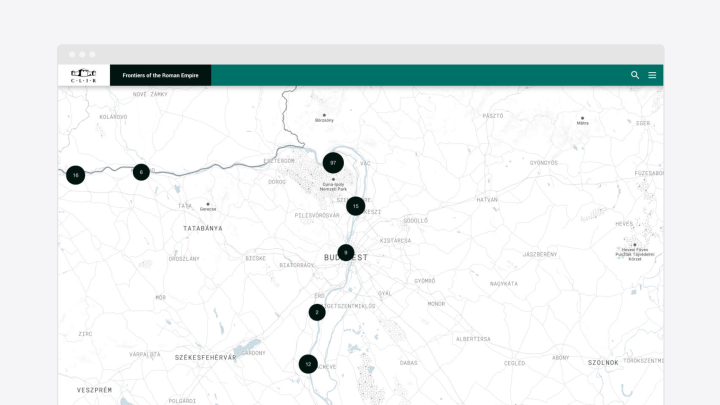Product owner
Feedback from stakeholders has been overwhelmingly positive. The team's workflow is smooth and seamless allowing them to attend to the needs of the client at all times. The partnership remains ongoing as they look to develop and improve the platform further.

A research institute hired Integral Vision to develop and establish a database platform. Their goal is to have an efficient and organized system in which to manage all their data.
Introduce your business and what you do there.
We are internation research center based at the University of Pécs (HU), with the scope of conducting and coordinating research on the Roman frontiers, with emphasis on the Danube Limes tentative World Heritage Site. We collaborate with colleagues from all over the European section of the Roman frontiers. The aim of our work is to provide reliable data for academia and tourism related development.
What challenge were you trying to address with Integral Vision?
For our daily work and long-range goals we wanted to establish an accessible, open, online tool (database platform) for managing and overseeing data from various sites all over the Roman frontiers. The number of these sites is in the thousands with numerous component parts (buildings, features within sites) and various auxiliary data (personnel, institutions, individual activities) so it was key to establish a manageable, clear system.
Team composition/dynamic team?
The core team included a project manager, a designer and a senior developer with additional people drawn in depending on project needs.
How did you come to work with Integral Vision?
In Hungary, Integral Vision was the sole company with multiple years of experience in managing such an archaeological database. Given their success with Archaeodatabase and the generally favoured, positive response from users it was an easy pick.
Describe the project and services they provided in detail.
First step was database planning, we established data types and volume, key functionality and some user must-haves (GIS display and measurements on front-end, a large set of user definable taxonomies, aggregate data between parents and children nodes). Afterwards data structure, access management, API, and layouts were gradually established in a Drupal framework and modules.
What evidence can you share that demonstrates the impact of the engagement?
The site was launched recently on schedule and although it has been published only recently, it recieved generally positive feedback from our colleagues, testers and outside professionals of the field too. So far 463 nodes were uploaded (75 Sites, 49 Site components, 68 Component parts, 108 Persons, 39 Institutions and 124 Research activities), which is an impressive start. All our expectations were met and we look forward to working together, adding new features to the application.
How did Integral Vision perform from a project management standpoint?
Project management went smooth, all our needs and requirements were attended to at all times. All the deadlines were met, we experienced no delays nor any bumps from the vendor's part. Regular demonstrations were held on Hangouts and we followed development progress through Jira.
What did you find most impressive about them?
I admired that during development, we were often presented with the pros and cons of several solutions and we could take our pick after careful consideration. I believe we avoided many pitfalls thanks to this proactive approach.
Are there any areas they could improve?
Not really, our mutual work was perfect as far as it goes.
